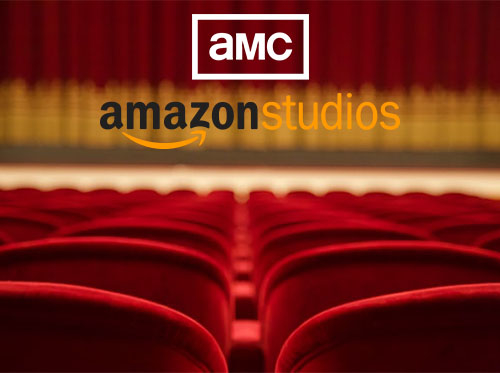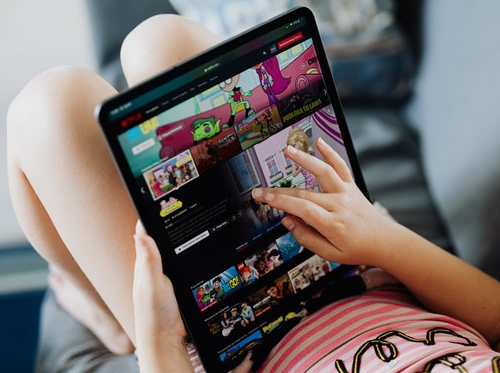Explained: The Future of Ad-Supported TV
WHAT is happening in Ad-Supported OTT?
The “Streaming Wars” have been raging for years, but the “AVOD Battle” is now heating up.
Feb 2020:
-
Fox Reportedly in talks to acquire Tubi for $500M+
-
NBCUniversal reportedly in talks to acquire Vudu from Walmart
-
Comcast acquires Xumo for $100M
-
RedBox begins testing free ad-supported TV service
Jan 2020: NBCU announces that Peacock will have three tiers, two of which will be ad-supported
Oct 2019: AT&T Announces that HBO Max will launch an ad-supported tier in 2021
June 2019: Quibi announces it will have an ad-supported tier (expects 75% of users to opt for it)
April 2019: Altice acquires Cheddar for $200M
Jan 2019: Viacom Acquires Pluto TV for $340M
NOTE: Excludes other AVOD market activity like launches from Flex, Vizio, CW Seed, more. Further, our analysis focuses on the “living room” viewership experience, and thus excludes companies like Atmosphere.tv that provide a free streaming solution for businesses. AVOD for commercial venues and other out-of-home screens is another exciting OTT sector that we’ll likely cover in the future.
WHY all the AVOD activity now?
Traditional TV is eroding. SVOD is saturating. AVOD is exploding.
Traditional TV is eroding: An existential threat demands business model evolution.
Cord-cutting is accelerating:
-
5.5M households abandoned traditional pay-TV in 2019 (8% YoY decline)
-
Since 2010, 7M+ consumers have abandoned pay-TV, and at an accelerating rate. Between 2015 to 2018, pay-TV subscribers declined by 1% each year…in 2019 YoY decline quadrupled to 4%
-
Roku estimates that by 2024 “roughly half of all U.S. TV households” will have either cut the cord or never had traditional TV (compared to only 32% of households in 2019)
This erosion of pay-TV is fundamentally altering the economics of the major networks, resulting in massive declines in two core legacy TV revenue streams: affiliate and ad revenues.
Case in point: ViacomCBS.
-
Affiliate Revenue Decline: In 2019 ViacomCBS generated $8.6B of affiliate revenue (31% of total). Given the YoY rate of cord-cutting, it is estimated that ViacomCBS may have lost $733M of affiliate revenue in 2019.
-
Ad Revenue Decline: In 2019, traditional TV advertising revenues declined by 4% (7% excluding political ads), a level of decline not seen since the Great Recession of 2008.
-
Result: Value is diminishing at an alarming rate for legacy TV networks. In 2014, Viacom and CBS had a combined market cap of $67B. In 2017 it was $43B. Today, the total market cap of the newly merged ViacomCBS is $17B…a 75% reduction in equity value! Also of note, Discovery and Scripps had a combined market cap of $38B+ in 2014. Today the merged entity has a market cap of $13.4B…a 65% reduction in equity value!
SVOD is Saturating: The subscription OTT tent isn’t big enough for everyone.
In 2019, the top four OTT platforms accounted for 79% of all OTT viewing hours in the US. Of these “Big four” platforms (Netflix, YouTube, Amazon Prime Video, and Disney/Hulu), only YouTube does not require a subscription. In 2020, new well-capitalized platforms like Disney+, HBO Max, Apple TV+, and Peacock will also be vying for a significant share of the highly attractive yet already top-heavy subscription video market.
While SVOD is perceived to be the most high value customer channel in the post-cable world, beating out the competition comes with a premium price tag; the above-listed companies are spending a combined $70B+ on content annually, and a win is far from guaranteed.
For traditional media companies like Disney, a complete embrace of big SVOD makes sense; Disney has incredible competitive advantage in IP / audience reach / marketing / execution ability, and SVOD is a strong complement to Disney’s diversified media business model.
However, the SVOD tent isn’t big enough to provide a reliable future to all media companies in search of a post-cable home. It’s not even big enough to support all of the existing platforms…SVOD household penetration was 85% for 2019 (already a high level), and SVOD subscriber growth is de-accelerating. In 2016, the SVOD market had 200% YoY subscriber growth. In 2017 it was 119%, in 2018 it was 65%, and in 2019 it was 31%.
Why the slowing subscriber growth? Market saturation and subscription fatigue. A recent study by Ampere Analysis explains:
“SVOD stacking—consumers taking multiple SVOD services—is showing signs of reaching saturation point in the US, with the average SVOD household subscribing to around 2.8 services, a figure that has remained unchanged year-over-year. This suggests that many more established US SVOD households have already curated their suite of SVOD services, and might not be willing to add a new subscription, and associated cost, to the mix.”
While the big SVOD market is solidifying, with clearly defined players and little room for new entrants, it is only a subsection of the OTT market. The YoY decline of traditional pay-TV (5.5M) far outpaces the adoption of subscription OTT (2.4M). This chasm is growing, leading to the emergence of an important 3rd channel that could help close the loss gap: free ad-supported OTT.
Free ad-supported streaming is exploding: The emergence of a viable “middle ground”.
User and viewership growth is ramping quickly in free ad-supported OTT services like Pluto TV, Xumo, Tubi, Vudu, The Roku Channel (Roku’s own ad-supported channel), and Amazon’s IMDB TV.
-
Roku: 37M users (36% YoY growth), The Roku Channel reached 56M viewers in 2019, impressions of monetized advertisements more than doubled YoY
-
Pluto TV: 22M monthly active users (67% YoY growth)
-
Tubi: 25M monthly users (20% growth over 6 months), 163M hours of content consumed per month (73% YoY growth), 6.5 hours spent on the platform per month per user (38% YoY growth)
-
Vudu: 25M+ registered users, 100M device install-base
-
Xumo: 5.5M monthly active users
NOTE: Figures based on what is reported in company press releases and news coverage. Actual figures are unknown.
As eyeballs are migrating from traditional pay-TV to ad-supported OTT, so are ad dollars. US AVOD revenue is projected to more than triple between 2018-2024, from $6B to $19B, and represents a significant and rapidly growing source of new streaming revenues. This opportunity is especially attractive to legacy TV companies (ViacomCBS, Fox Corp., Discovery, A+E Networks, CW) which need to offset the revenues they’re losing to cord-cutting.
Rather than aggressively invest to compete in the big SVOD wars, we at RockWater believe the prudent OTT strategy for these middle market network groups is to invest in ad-supported OTT. As the subscription space saturates and free platforms grow, it’s better to be at the top of the ad-supported market than the bottom of the SVOD market.
However, these two VOD markets aren’t mutually exclusive pursuits. In fact, they can work very well together.
HOW can ad-supported OTT platforms help middle-market TV networks / studios weather the storm?
AVOD represents an important piece of a more holistic media strategy.
Content distribution and consumption are fragmenting. That doesn’t mean that all TV viewing is being replaced by Netflix. It means that the once monolithic viewing experience monopolized by legacy TV is now being dispersed throughout several mediums including SVOD, ad-supported OTT, mobile / social, and traditional pay-TV (which despite its dramatic decline, still delivers unmatched scale/reach…73% of total video viewing time in the US is spent on linear TV).
Acquisitions of ad-supported platforms may offer companies like ViacomCBS and Fox Corp. an increasingly attractive (partial) solution to this fragmentation. Ownership of scaling AVOD platforms will help programmers offset audience declines and also create attractive, addressable inventory for its longstanding marketer relationships. But no, AVOD M&A is not sufficient on a standalone basis.
Instead, we believe a piecemeal strategy of “fishing where the fish are” could be a smart approach for these mid-level network groups:
-
Monetize scaled audiences across traditional TV and free OTT through advertising. Also use free OTT / AVOD to drive audience to down-funnel subscriptions (more effective marketing tactic than the standard free trial period).
-
Monetize superfans and premium audiences through more niche D2C subscription efforts like CBS All Access, Showtime Anytime, and BET+ (Viacom), Food Network Kitchen (Discovery), Fox Nation (Fox), Lifetime Movie Club and History Channel Vault (A+E Networks).
-
Monetize production capabilities through pursuing the “studio model” of licensing content to platforms like Netflix and Hulu (e.g. Lifetime’s “You” for Netflix or ViacomCBS’s “Jack Ryan” and “13 Reasons Why” for Amazon Prime and Netflix, respectively).
AVOD platforms provide value to networks vying to compete in a transforming advertising marketplace.
At the TV Upfronts each year, network executives receive input from marketers re their evolving needs, including how traditional TV networks can continue to be compelling advertising partners in the changing media landscape. With accelerating pay-TV viewership changes and the emergence of highly scaled, digitally native platforms (FB, GOOG), networks need to demonstrate how they will mobilize their still considerable assets (content libraries, IP, audience, production capabilities, distribution infrastructure) to provide continuous value in the post-TV world.
Through our client advisory work at RockWater, we’ve evaluated the key value-drivers within the TV advertising economy. Our findings are in the chart below.
The increase in AVOD acquisitions is being driven by the need to compete in a transforming advertiser marketplace.
In its press release after acquiring Pluto, Viacom explains,
“Pluto TV accelerates Viacom’s advanced marketing solutions (“AMS”) business, serving as a very significant incremental source of targeted inventory – particularly against younger demographics – thereby strengthening Viacom’s ability to serve advertising customers and their associated agencies.”
These platforms bolster a network’s ability to deliver on many of the value drivers outlined in our above chart.
Networks also provide value to AVOD platforms vying to compete in the increasingly crowded OTT space.
Not only do these streaming platforms play an essential role in the big picture strategy of mid-market TV networks, but these networks also provide incredibly unique value to the platforms they’re acquiring. Even before this flurry of acquisitions, viewership on free ad-supported OTT platforms had skyrocketed (see viewership data above). Leveraging the library content, IP, brands, production capabilities, and owned marketing channels of the new parent companies, these platforms will become even more appealing to consumers who want to cut the cord but also don’t want to subscribe to a bunch of SVOD services (just imagine how much Tubi can grow if / when it broadcasts Fox’s slate of NFL games). We expect viewership to continue to surge as a result.
Because these legacy assets provide so much value to these platforms, you may be wondering “Why are these networks spending hundreds of millions on buying these upstart platforms instead of just building their own?”.
The simple answer: tech ain’t easy.
Disney was notoriously inept at building its own technology before acquiring BAM Tech, which now powers Disney+ (remember the ESPN phone? Or the Applause app?).
These technology-native companies (Tubi, Xumo, Vudu) have built sophisticated products that have aggregated young audiences despite lacking truly premium content or verticalized production infrastructure. Plugging these turnkey platforms into the portfolios of companies like ViacomCBS, Fox Corp., and NBCU will accelerate growth in the ad-supported streaming space, and help legacy networks weather the storm of cord-cutting, providing a more solid foundation for a sustainable “post-TV” future.
Of course, we at RockWater are strong proponents of rigorous build / buy analyses, and the price tags over the past 18 months definitely feel high relative to the revenue and traction stats that we’re privvy to. But, in an increasingly competitive market that is evolving quickly, and with scarcity of somewhat-scaled AVOD assets, the acquirers’ business development teams are likely allocating a premium for deal certainty, accelerated market entry and FOMO avoidance.
So What? Big Picture Implications
Ultimately, this vision of content brands pursuing a multi-pronged revenue strategy (advertising via aggregated reach across linear and digital channels, D2C, content licensing) in response to the increasing fragmentation of the media ecosystem is not new. It is in keeping with our overall industry thesis at RockWater (see our previous pieces on Food Media, Barstool / Ringer, and DAZN).
What makes the story of legacy TV companies different is the sheer scale. It’s easy to applaud Barstool and Complex for deftly navigating industry disruption, but unlike ViacomCBS or Discovery, nextgen publishers don’t have tens of billions of equity value to protect. It’s one thing to navigate a speed boat across choppy waters; it’s another thing to steer a cruise ship.
However, the underlying market dynamics and value drivers are consistent for all content brands trying to grow viewership and revenue in this increasingly multi-platform world.
Ultimately, content is simply a top-of-funnel tool. Traditionally, TV networks aggregated audience attention on TV screens and sold that attention to advertisers, who then pull viewers down the funnel to purchase their products.
The content ecosystem today is more complex, but the basic premise is still the same. Amazon is spending $6B on content per year in hopes of directing that funnel towards its marketplaces (Prime for products, channels for 3rd party OTT subscriptions), and Apple is also spending $6B on content to deploy a similar strategy for its own marketplaces (Apple TV Channels, gaming, app store).
Facebook is spending $1.5B on content to drive more user dwell time and thus customer impressions for its massive digital advertising business, and even Facebook has a new marketplace product for digital vieo subscriptions like Tastemade and Motor Trend. For Disney, its content franchises power an entire flywheel of multi-billion dollar businesses from consumer products, to theme parks and cruises. Even on the digital side, Penn National Gaming just spent $136M to acquire a majority stake in Barstool Sports, hoping to drive revenue to its core businesses by directing this funnel of passionate fans towards its casinos and betting apps.
Why is this relevant to the emergence of AVOD?
As media fragments, the traditional audience funnels generated by these mid-tier TV network groups are narrowing. By unifying distribution across traditional pay-TV and ad-supported OTT (FAST, AVOD, branded apps and even dot com destinations…yes, content viewership is actually still happening here!), and supplementing this reach / revenue with smaller scale SVOD offerings, these networks are hoping to maintain the scale of their audiences and a viable business model.
This begs the question – what’s the end game?
Some of Softbank’s overly-ambitious “vision fund” companies, which took the approach of scale at all costs, are facing shut downs, large layoffs and other major challenges (see Brandless, Getaround, WeWork, to name just a few). The hope was to deficit finance majority share capture of large future markets, cement incumbency, and then scale monetization over time.
In the big SVOD wars, a similar sentiment permeates the market for the largest players…only two to three will be the go-to streamers for every household, so a highly resource-intensive land grab strategy is underway by market participants.
In contrast, mid-level media companies are taking an approach they hope is better suited to their ecosystem roles: take smaller bets, watch and learn as the market unfolds, build upon their core capabilities, increasingly diversify revenues, and then deploy a measured pace and scale of mergers, reorgs and small to mid scale acquisitions. It is guaranteed that these middle market entertainment companies won’t get the big win and an outsized return to investors, but perhaps they will increase the likelihood of a market level return and sustainability for another one to two decades….that’s very much a win in our books.
Or, is “sustainability” just providing runway with the end goal being an acquisition target over the next couple years? Implying that there is no long term market for mid-sized media?
David Zaslav, the CEO of Discovery, has made it clear that he believes Discovery is best combined with another media operator like CBS or Comcast. Many are betting that Apple is going to make a major media acquisition, with candidates ranging from Lionsgate and MGM (which is actively being shopped) to ViacomCBS, A24 and Sony Pictures. Would a major telcom be interested in acquiring Fox Corp?
Our bet is that consolidation will continue. Our hope is that capital flows rationalize towards sustainable business models, and that a thriving and diversified entertainment ecosystem of various-sized market players can deliver stable investor returns and delight to consumers.
These AVOD developments could be a great boon for the broader media ecosystem, though we’ll know more over time. We at RockWater will be watching this space closely.
—
Ping us here at anytime. We love to hear from our readers.



